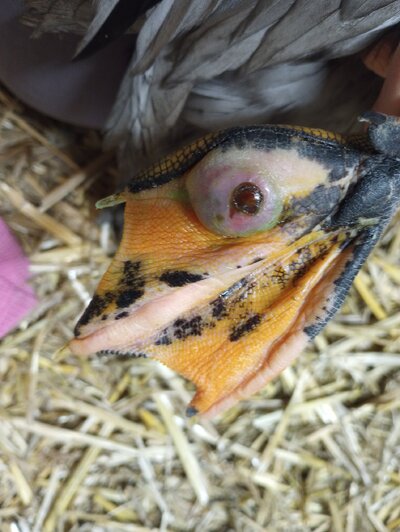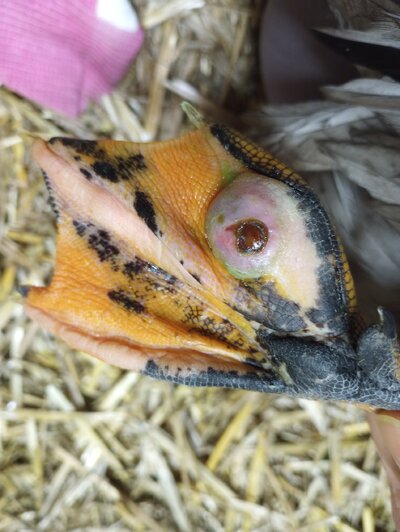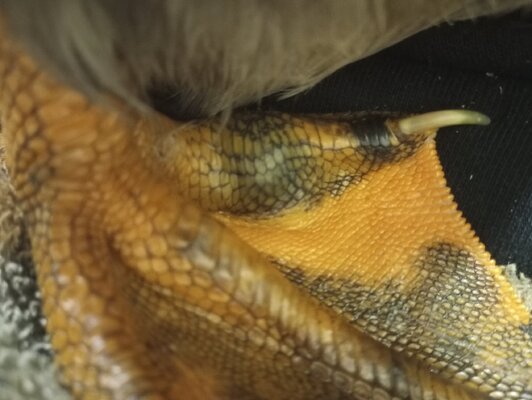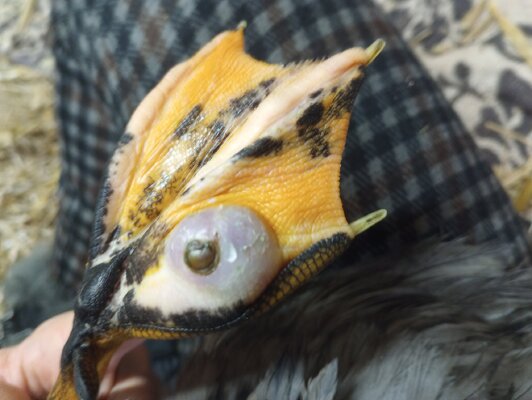You have been given some good advice above by both Beekissed and ChickenCanoe. The bumblefoot doesn't look that bad, but the other issue causing the swelling (bacterial arthritis, such as staph or MS, or articular gout) is probably the thing causing the pain. Staph arthritis is the most common in poultry. If you would like to read more about gout, here are some good sources:
http://www.thepoultrysite.com/articles/3509/gout-management-in-poultry/
http://www.merckvetmanual.com/poult...s-of-poultry/urate-deposition-gout-in-poultry
Here are a couple of articles on bacterial arthritis:
http://www.thepoultrysite.com/diseaseinfo/143/staphylococcosis-staphylococcal-arthritis-bumble-foot/
Mycoplasma synoviae (from The University of FL)
Synonyms: MS, infectious synovitis, synovitis, silent air sac
Species affected: chickens and turkeys.
Clinical signs: Birds infected with the synovitis form show lameness, followed by lethargy, reluctance to move, swollen joints, stilted gait, loss of weight, and formation of breast blisters. Birds infected with the respiratory form exhibit respiratory distress. Greenish diarrhea is common in dying birds (see Table 1). Clinically, the disease in indistinguishable from MG.
Transmission: MS is transmitted from infected breeder to progeny via the egg. Within a flock, MS is spread by direct contact with infected birds as well as through airborne particles over short distances.
Treatment: Recovery is slow for both respiratory and synovitis forms. Several antibiotics are variably effective. The most effective are tylosin, erthromycin, spectinomycin, lincomycin, and chlorotectracycline. These antibiotics can be given by injection while some can be administered in the feed or drinking water. These treatments are most effective when the antibiotics are injected.
Prevention: Eradication is the best and only sure control. Do not use breeder replacements from flocks that have had MS. The National Poultry Improvement Plan monitors for MS.
http://www.thepoultrysite.com/articles/3509/gout-management-in-poultry/
http://www.merckvetmanual.com/poult...s-of-poultry/urate-deposition-gout-in-poultry
Here are a couple of articles on bacterial arthritis:
http://www.thepoultrysite.com/diseaseinfo/143/staphylococcosis-staphylococcal-arthritis-bumble-foot/
Mycoplasma synoviae (from The University of FL)
Synonyms: MS, infectious synovitis, synovitis, silent air sac
Species affected: chickens and turkeys.
Clinical signs: Birds infected with the synovitis form show lameness, followed by lethargy, reluctance to move, swollen joints, stilted gait, loss of weight, and formation of breast blisters. Birds infected with the respiratory form exhibit respiratory distress. Greenish diarrhea is common in dying birds (see Table 1). Clinically, the disease in indistinguishable from MG.
Transmission: MS is transmitted from infected breeder to progeny via the egg. Within a flock, MS is spread by direct contact with infected birds as well as through airborne particles over short distances.
Treatment: Recovery is slow for both respiratory and synovitis forms. Several antibiotics are variably effective. The most effective are tylosin, erthromycin, spectinomycin, lincomycin, and chlorotectracycline. These antibiotics can be given by injection while some can be administered in the feed or drinking water. These treatments are most effective when the antibiotics are injected.
Prevention: Eradication is the best and only sure control. Do not use breeder replacements from flocks that have had MS. The National Poultry Improvement Plan monitors for MS.







